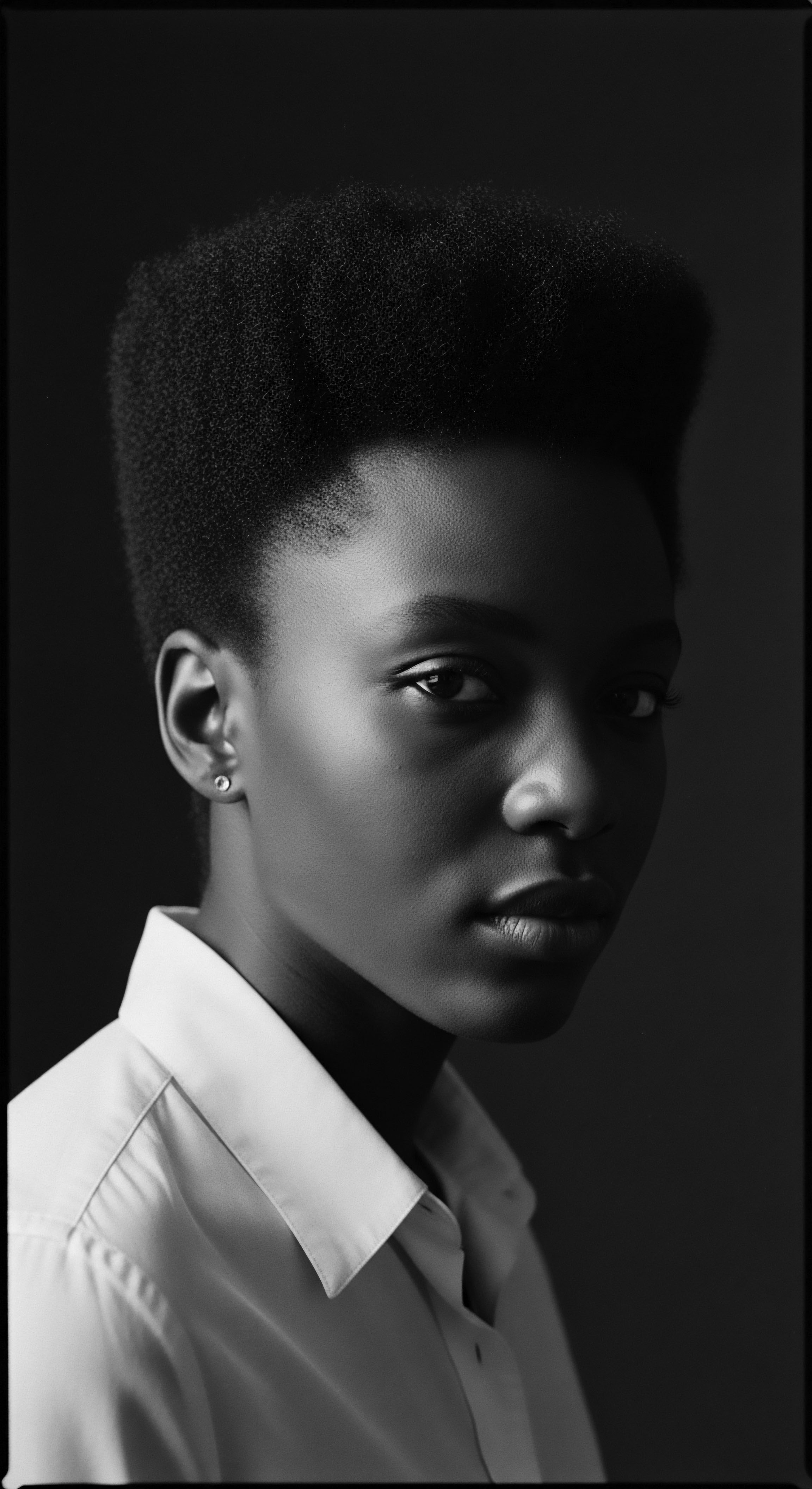
Fundamentals
The term ‘Afro-Diasporic Scalp’ signifies more than a mere anatomical region; it serves as a profound repository of ancestry and tradition for individuals of African descent across the globe. This designation encompasses the intricate biological characteristics of the scalp and the hair it yields, understanding these attributes as profoundly shaped by historical trajectories, cultural adaptation, and enduring care practices. It offers an initial explanation, inviting a journey into understanding this deeply significant part of one’s being.
From the earliest communal gatherings on the African continent, where hair became a canvas for identity, the scalp emerged as the foundational element. It was the fertile ground from which narratives of lineage, social standing, and spiritual connection sprouted forth. The scalp, therefore, is intimately linked to the unique curl patterns, density, and growth patterns inherent to Afro-textured hair. These biological particularities inform traditional care rituals and contemporary approaches to wellness.
Understanding the Afro-Diasporic Scalp commences with acknowledging its distinctive physiology. Afro-textured hair typically emerges from elliptical or flattened hair follicles, resulting in strands that are coiled and possess a remarkable elasticity. This particularity influences how natural oils, known as sebum, travel down the hair shaft, leading to a propensity for dryness compared to straighter hair textures.
Consequently, ancestral practices intuitively focused on nurturing the scalp, ensuring a well-nourished foundation for hair vitality. The very definition of the Afro-Diasporic Scalp begins here, at this biological interplay with inherited traits, reflecting countless generations of lived experience.
The scalp in this context assumes a role as a living archive, bearing the imprints of environmental adaptations and human ingenuity. In West African societies, for example, the health of the scalp was paramount, seen as a direct reflection of overall well-being and even spiritual alignment. Ancient remedies, drawn from indigenous botanicals and oils, were applied with intention, seeking to address dryness, soothe irritation, and promote robust hair growth. These early applications reveal a deep comprehension of the scalp’s needs, a wisdom passed through oral traditions and communal ritual.
The initial understanding of the Afro-Diasporic Scalp, then, is rooted in its fundamental meaning ❉ a biological landscape uniquely adapted to specific hair textures, profoundly influenced by a shared ancestral legacy of care, and a marker of a rich cultural history. It is where the physical meets the spiritual, where science meets centuries of lived wisdom. The historical background of the Afro-Diasporic Scalp is inextricably tied to the journeys of African peoples, highlighting the enduring resilience embedded within every strand.
The Afro-Diasporic Scalp represents a biological landscape deeply intertwined with centuries of Black and mixed-race hair heritage and care practices.
Communal rituals frequently centered around the care of the head, elevating the simple act of attending to hair and scalp into a cherished moment of social bonding. These were not merely acts of grooming; they were acts of connection, instruction, and the perpetuation of cultural knowledge. The shared experience of preparing traditional salves or meticulously braiding hair underscored the communal significance of scalp health. This collective nurturing forms an integral component of the fundamental definition of the Afro-Diasporic Scalp.
Moreover, the environment played a decisive role in shaping early scalp care. In various African climates, the scalp required protection from sun, dust, and other elements. This spurred the creation of specific head coverings and the liberal use of natural emollients.
The practical requirements of maintaining scalp integrity in diverse settings contributed to the accumulated knowledge, making the Afro-Diasporic Scalp a testament to adaptive resilience. The early practices illuminate the foundational care provided to this area of the body.
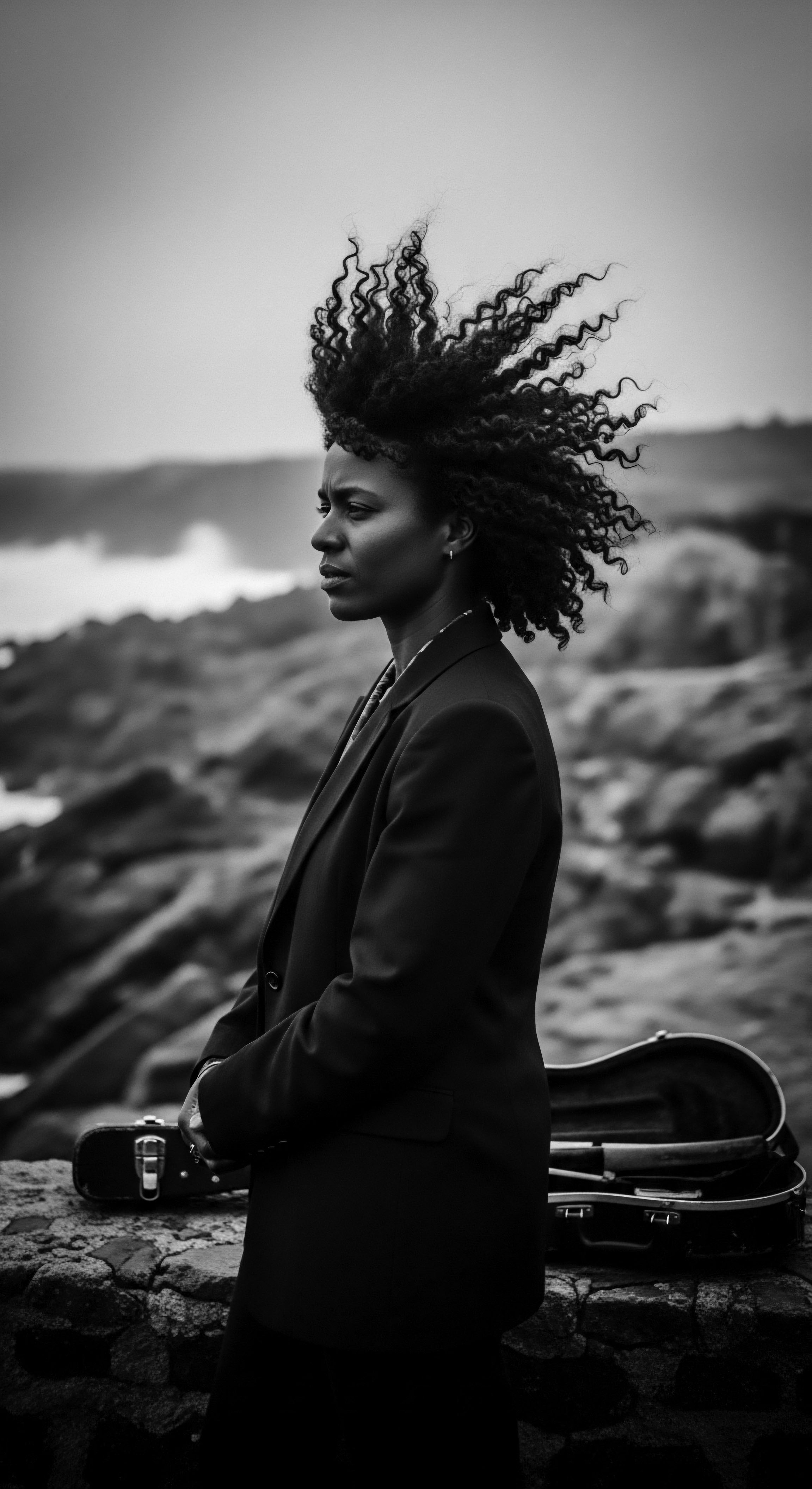
The Legacy of Natural Ingredients
A key aspect of the fundamental understanding of the Afro-Diasporic Scalp lies in the ancestral reliance on natural ingredients. These substances were not chosen at random; they were selected for their observed efficacy in maintaining the scalp’s health and supporting hair vitality.
- Shea Butter ❉ Derived from the nut of the shea tree, shea butter has been a staple for centuries, prized for its profound moisturizing capabilities and its ability to soothe dry, irritated skin. Its use on the scalp helped to create a protective barrier.
- Palm Oil ❉ In many West African communities, palm oil served not only as a culinary staple but also as an external application for hair and scalp, recognized for its conditioning properties and its deep nourishing qualities.
- Aloe Vera ❉ Revered for its soothing and anti-inflammatory attributes, aloe vera gel was applied to the scalp to alleviate dryness and discomfort, promoting a calming effect.
- Castor Oil ❉ A dense oil extracted from the castor bean, it was widely employed to stimulate circulation on the scalp, which in turn supported healthy hair growth and contributed to hair thickness.
- Henna ❉ Beyond its use as a natural dye, henna was valued for its conditioning benefits, strengthening hair strands and nourishing the scalp, preventing irritation.
Each ingredient carried its own significance, woven into daily routines and special rituals alike. The practice of preparing these remedies often involved the elders, who imparted their extensive knowledge to younger generations, reinforcing the communal bond around hair and scalp care. This rich tradition underscores the deep, intrinsic connection between the Afro-Diasporic Scalp and the natural world from which its care sprung. This early recognition of the scalp’s unique needs established a long-standing tradition of intentional and respectful care.

Intermediate
Moving beyond a basic comprehension, the intermediate perception of the Afro-Diasporic Scalp deepens, embracing its role not only as a biological entity but also as a powerful site of cultural expression, resistance, and healing throughout the diaspora. This understanding acknowledges the profound shifts in scalp care practices forced by historical circumstances, while celebrating the persistent ingenuity that preserved ancestral wisdom across continents. The significance of the scalp takes on further layers when viewed through the lens of continuity and disruption.
The transatlantic trade in enslaved Africans inflicted immense suffering, systematically severing individuals from their homelands, their families, and their cultural practices. One of the initial acts of dehumanization was often the forced shaving of heads, a deliberate attempt to strip enslaved people of their identity and erase their rich hair heritage. In the harsh, new environments of the Americas, access to traditional tools, nourishing oils, and the time for communal hair rituals vanished. Hair became matted, tangled, and often concealed under scarves, a stark contrast to the elaborate styles of pre-colonial Africa.
Despite these immense challenges, the spirit of care persisted. Enslaved Africans, with remarkable resilience, adapted, finding ingenious ways to tend to their scalps and hair using whatever materials were available. This included animal fats, various greases, and even kerosene for cleansing, demonstrating a fierce determination to maintain hygiene and connection to self in the face of brutal oppression. The hair and scalp became a quiet canvas for resistance, a means to preserve a fragment of identity when so much else was stolen.
The practice of braiding, often done quickly and covertly, became a secret language, sometimes even concealing information or seeds for survival. This enduring spirit of adaptation forms a crucial aspect of the Afro-Diasporic Scalp’s historical meaning.

The Legacy of Resilience in Care
The continuity of care for the Afro-Diasporic Scalp, even under duress, stands as a testament to the deep cultural value placed upon hair. During the period of enslavement, the conditions made maintaining personal hygiene incredibly difficult, leading to common issues like body lice and ringworm. Yet, older enslaved women, drawing upon knowledge of herbs, roots, and plants brought from Africa, continued to offer remedies and care, not only for general health but also for hair and scalp issues. This underground knowledge network underscores the enduring importance of communal health.
In the context of the Afro-Diasporic Scalp, consider the significant practices related to moisture retention. Afro-textured hair, due to its unique coiled structure, tends to be drier as natural scalp oils struggle to travel down the spiraled shaft. Traditional African communities instinctively used rich butters and oils to counteract this, providing external moisture and protection.
This understanding traveled across the Atlantic, even if the preferred ingredients changed. The persistent search for moisture-rich applications, often focusing directly on the scalp, continued to shape practices within the diaspora.
The evolution of scalp care within the diaspora also highlights the emergence of pioneering figures. In the late 19th and early 20th centuries, individuals like Annie Turnbo Malone and Madam C.J. Walker created entire industries dedicated to Black haircare.
Their product lines frequently focused on scalp health and hair growth, directly addressing common concerns such as dryness, breakage, and conditions like alopecia, which were often exacerbated by harsh styling practices aimed at conforming to Eurocentric beauty standards. These entrepreneurs understood the specific needs of the Afro-Diasporic Scalp, creating solutions that were both commercially successful and culturally resonant.
The Afro-Diasporic Scalp encapsulates a journey of adaptation, where ancestral wisdom in caring for coiled strands persisted through ingenuity despite historical displacement.
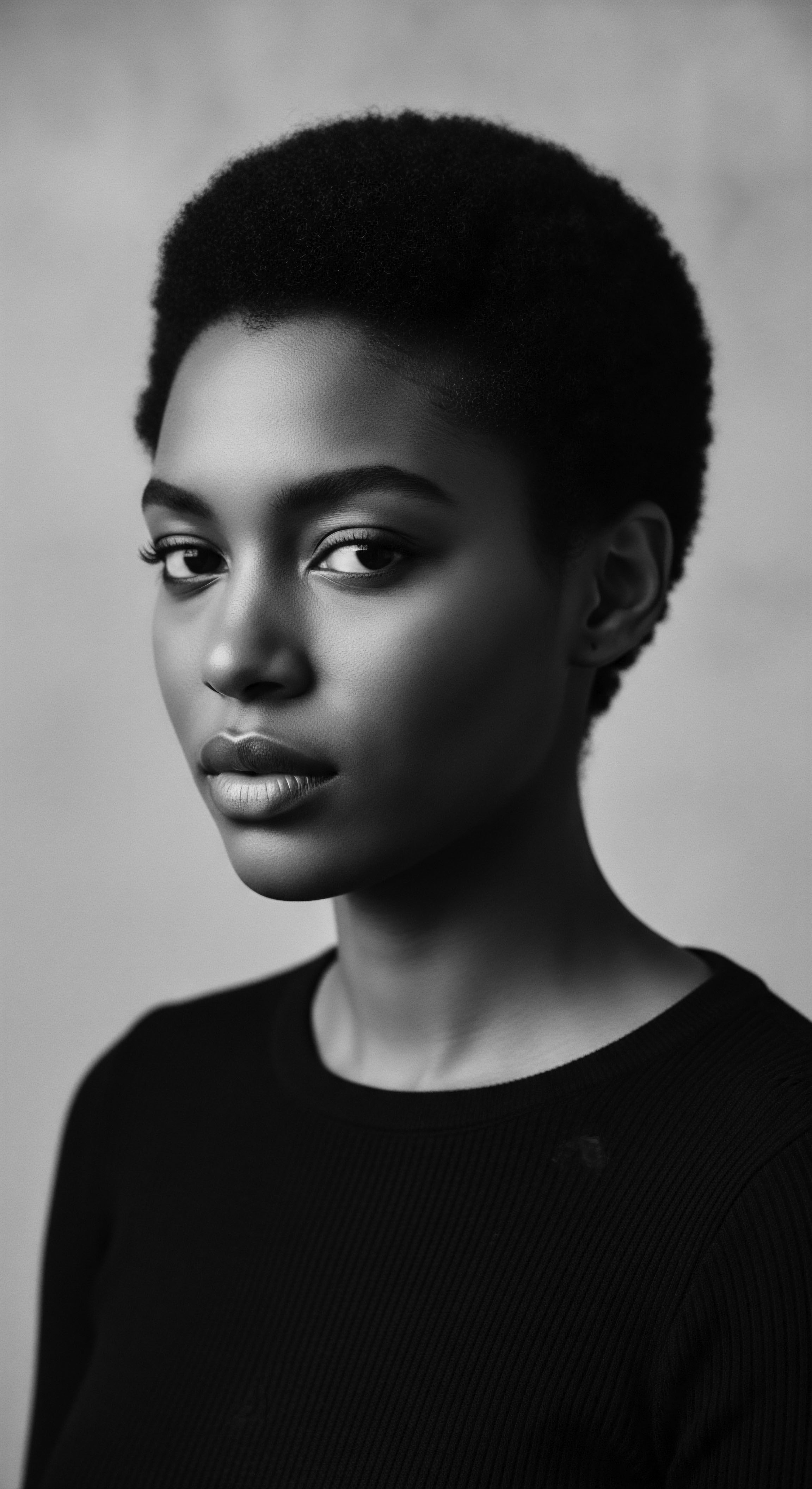
Interconnectedness of Scalp, Hair, and Identity
The intermediate understanding recognizes that the Afro-Diasporic Scalp cannot be isolated from the broader narrative of Black identity. The texture and appearance of hair, stemming directly from the scalp, became deeply politicized. The stigmatization of natural Afro-textured hair, often labeled as “nappy” or “unruly” by dominant societies, forced a complex relationship with one’s own appearance.
Many individuals sought methods to alter their hair, sometimes with damaging consequences for the scalp, in an effort to achieve social acceptance or economic opportunity. This historical pressure directly impacted scalp health, leading to conditions like traction alopecia or chemical burns.
However, the periodic resurgence of natural hair movements throughout history, particularly notable in the 1960s Civil Rights era and in contemporary times, represents a powerful reclamation. These movements celebrated the inherent beauty of Afro-textured hair, affirming the scalp as the foundation for diverse styles that honor ancestral lineage. Wearing an Afro, braids, or locs became acts of defiance, pride, and self-love. The renewed interest in traditional ingredients and practices signals a deeper connection to cultural roots.
| Era/Context Pre-Colonial Africa |
| Traditional/Adapted Scalp Care Application of natural oils (palm, shea), herbal infusions, communal cleansing rituals. |
| Cultural Significance Symbol of status, identity, spiritual connection; communal bonding. |
| Era/Context Enslavement Period |
| Traditional/Adapted Scalp Care Use of animal fats, various greases, adapted braiding techniques; forced head shaving. |
| Cultural Significance Loss of identity, dehumanization; covert resistance, survival. |
| Era/Context Post-Emancipation/Early 20th Century |
| Traditional/Adapted Scalp Care Emergence of specialized Black haircare products (e.g. Madam C.J. Walker's "Wonderful Hair Grower") addressing dryness, growth. |
| Cultural Significance Economic empowerment, adaptation to beauty standards; continued struggle with Eurocentric ideals. |
| Era/Context Natural Hair Movements (1960s & Beyond) |
| Traditional/Adapted Scalp Care Re-emphasis on natural oils, traditional styles; development of products for textured hair. |
| Cultural Significance Reclamation of identity, self-love, cultural pride, defiance against discrimination. |
| Era/Context The journey of Afro-Diasporic Scalp care reflects a dynamic interplay between inherited biology, oppressive forces, and unwavering ancestral ingenuity. |
The collective memory of scalp care, therefore, transcends mere cosmetic routines; it embodies a saga of resilience, cultural preservation, and identity formation. The continued engagement with this aspect of self offers a profound connection to generations past and a path toward holistic well-being. This deeper understanding of the Afro-Diasporic Scalp provides rich context for its ongoing relevance in contemporary discourse surrounding hair health and identity.
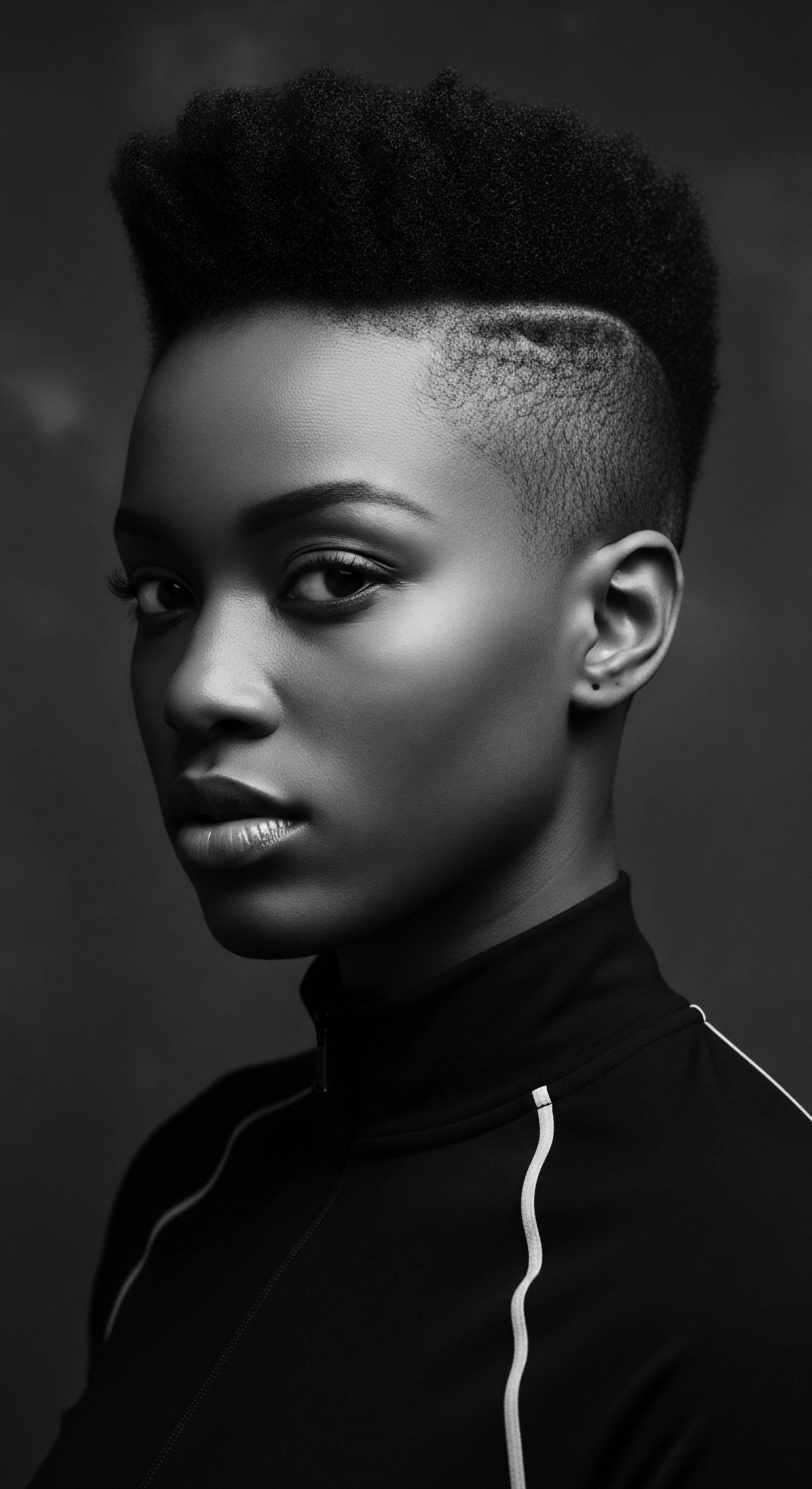
Academic
The Afro-Diasporic Scalp stands as a complex bio-cultural construct, its academic delineation necessitating an interdisciplinary lens that synthesizes dermatological science, historical anthropology, and socio-cultural studies. Its precise meaning extends beyond mere epidermal anatomy, instead encompassing a dynamic interplay of genetic predispositions, environmental stressors, and profoundly meaningful care practices, all shaped by the historical trajectories of African peoples. A rigorous examination reveals how centuries of lived experience have imprinted upon the very biology and cultural perception of this region.
From a physiological standpoint, the Afro-Diasporic Scalp is characterized by its inherent relationship with highly coiled, elliptically shaped hair follicles. This unique follicular morphology results in hair strands that possess numerous twists and turns, making the distribution of sebum along the hair shaft less efficient. Consequently, this predisposition contributes to a drier scalp environment compared to other hair types, rendering it more susceptible to certain dermatological conditions.
Furthermore, the inherent fragility of coiled hair at its points of curvature increases its vulnerability to breakage, particularly at the root where it emerges from the scalp. This biological reality underscores the historical necessity for specialized care routines focused on maintaining moisture and minimizing mechanical stress.
The cultural import of the Afro-Diasporic Scalp is equally compelling, acting as a profound barometer of collective experience. In pre-colonial West African societies, the scalp and hair were central to expressions of social hierarchy, spiritual connection, and tribal identity. Hairstyles, often intricate and time-consuming, served as non-verbal communication, signaling marital status, age, or even readiness for spiritual rites.
(Byrd & Tharps, 2001) The act of grooming itself was a deeply communal ritual, a shared moment that transmitted not only technical skills but also ancestral knowledge concerning herbal remedies, oils, and protective styling. These practices inherently recognized the scalp as a vital extension of the self, deserving of reverence and meticulous care.
The Afro-Diasporic Scalp functions as a living archive, embodying ancestral resilience, scientific uniqueness, and the profound cultural narratives of a people.
The brutal rupture of the transatlantic slave trade violently disrupted these established patterns of care. Enslavement frequently began with the forceful shaving of heads, a deliberate act designed to erase identity and sever spiritual ties. This initial trauma extended into the horrific living conditions of the enslaved, where proper hygiene was systematically denied.
The scarcity of traditional tools and ingredients, coupled with grueling labor and unsanitary environments, left scalps exposed to myriad ailments and hair prone to severe matting and damage. This period marked a profound shift, yet simultaneously spurred extraordinary innovation in adaptive scalp care.
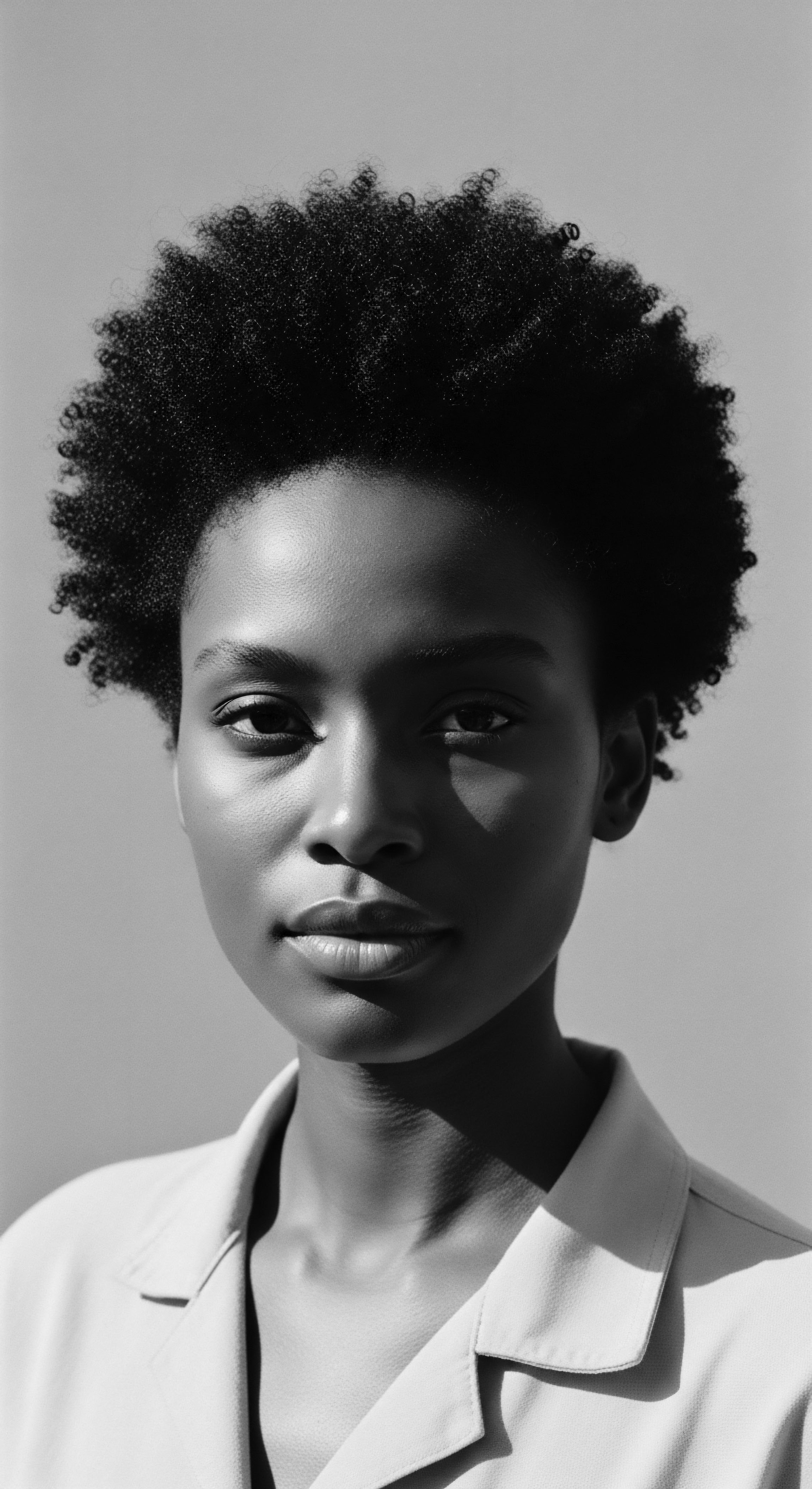
Ancestral Ingenuity and the Maroon Resistance
A compelling instance of this ancestral ingenuity, often less widely explored, arises from the experiences of enslaved West African women in the Maroon communities of Suriname and French Guiana. These communities, composed of individuals who had escaped the brutal realities of plantation slavery, actively reconstructed aspects of their ancestral lifeways. Amidst the desperate conditions of survival and the continuous struggle for liberation, the practices surrounding hair and scalp took on additional, clandestine layers of significance. Ethnographic research, drawing from oral traditions, reveals that enslaved women would meticulously braid tiny rice seeds, crucial for future sustenance, into their intricate hairstyles.
(van Andel, T.V. & Adjako, E. as cited in “How Enslaved Africans Braided Rice Seeds Into Their Hair & Changed the World,” 2020)
This practice represents a powerful intersection of biology, culture, and survival. The Afro-Diasporic Scalp, specifically the hair growing from it, transformed into a clandestine vessel for perpetuating agricultural heritage. The tightly coiled texture of the hair, rooted firmly in the scalp, offered an ideal structure for concealing these vital seeds, protecting them from detection by enslavers. Upon reaching liberated territories, these hidden seeds, once carefully braided close to the scalp, were planted, providing food and laying the groundwork for self-sufficient communities.
This historical example underscores the profound practical utility and symbolic significance of the Afro-Diasporic Scalp, transforming it from a site of vulnerability into a testament to ingenuity and an instrument of freedom. It highlights a unique facet of resilience, where hair became a literal and metaphorical carrier of hope and future.

Dermatological Considerations and Hair Product Evolution
The biological distinctiveness of the Afro-Diasporic Scalp also presents specific dermatological considerations. The propensity for dryness, combined with historical and cultural styling practices, can lead to particular scalp conditions. For instance, central centrifugal cicatricial alopecia (CCCA), a form of permanent hair loss, disproportionately affects women of African descent.
Research indicates a potential association between CCCA and practices that exert chronic traction on the hair follicles, such as certain braiding techniques, or the application of chemical relaxers that can cause scalp burns. This highlights the lasting impact of beauty standards imposed during the post-emancipation era, where the push to straighten textured hair often led to damaging outcomes for the scalp.
The evolution of hair products for Afro-Diasporic hair provides another window into its meaning. Early pioneers in the Black beauty industry, such as Madam C.J. Walker and Annie Turnbo Malone, specifically formulated products addressing scalp health, aiming to prevent hair loss and promote growth. These innovations, born from a deep understanding of the unique needs of Afro-textured hair, represented an economic and social revolution, offering agency and entrepreneurial avenues for Black women.
While some early products included harsh chemicals, their later formulations, and the foundational idea of specialized care, laid groundwork for the modern Black haircare industry. This industry increasingly focuses on nourishing the scalp with natural ingredients, many of which echo ancestral remedies, and promoting styles that honor the hair’s natural state.
Contemporary hair science continues to explore the biomechanics and biochemical needs of the Afro-Diasporic Scalp. Studies affirm the benefits of consistent moisture and gentle handling. The use of oils, a practice deeply rooted in African traditions, finds scientific backing in its ability to seal in moisture and provide a protective barrier to the scalp and hair cuticle.
Research into the specific properties of traditional African botanicals, such as Chebe powder from Chad or Baobab oil, further validates ancestral wisdom, demonstrating their efficacy in promoting hair health and minimizing breakage by retaining moisture and strengthening strands. This convergence of historical practice and scientific validation adds a profound layer of authority to the understanding of the Afro-Diasporic Scalp.
The academic definition of the Afro-Diasporic Scalp, therefore, integrates these multifaceted perspectives. It is a biological entity with specific needs, a historical battleground for identity, a canvas for cultural expression, and a testament to enduring resilience. Its study necessitates a departure from Eurocentric frameworks, demanding an appreciation for its inherent distinctiveness and the rich, complex narratives woven into its very fabric. The continuous exploration of this area yields crucial insights not only for dermatology and cosmetology but also for anthropology, sociology, and the broader understanding of human adaptation and cultural persistence.
- Follicular Morphology ❉ The unique elliptical or flattened shape of hair follicles on the Afro-Diasporic Scalp gives rise to highly coiled hair strands. This morphological characteristic influences sebum distribution, leading to a tendency for scalp dryness and increased susceptibility to breakage at the hair’s points of curvature.
- Moisture Retention Dynamics ❉ Due to the specific hair texture, the Afro-Diasporic Scalp often requires external moisturization. Traditional and contemporary practices emphasize the application of oils and butters to seal in hydration, a method now supported by dermatological understanding of barrier function.
- Cultural Styling Impact ❉ Historical styling practices, including tight braiding and the use of chemical relaxers, have had a significant impact on the Afro-Diasporic Scalp, contributing to conditions like traction alopecia and irritant contact dermatitis. This highlights the interplay between cultural conformity pressures and scalp health.
- Ancestral Botanical Applications ❉ A growing body of evidence affirms the efficacy of traditional African botanicals, such as Chebe powder, shea butter, and various herbal infusions, in supporting scalp health and hair strength. These practices are rooted in centuries of empirical observation within indigenous communities.
The academic inquiry into the Afro-Diasporic Scalp, consequently, moves beyond a purely clinical assessment. It requires a deep respect for the historical circumstances that have shaped its physiology and its care, recognizing that its meaning is inextricably linked to the ongoing journey of self-determination and cultural pride for people of African heritage. This area of study continues to yield revelations, offering fresh interpretations of what constitutes true hair wellness.

Reflection on the Heritage of Afro-Diasporic Scalp
The journey through the definition and historical tapestry of the Afro-Diasporic Scalp leaves us with a profound sense of continuity, a quiet melody echoing across generations. This is not merely an academic exercise; it represents a heartfelt homecoming to a truth often obscured by time and external narratives. The scalp, this often-overlooked foundation beneath our cherished hair, carries within its very essence the wisdom of our forebears, the resilience of our collective spirit, and the unyielding strength of a heritage that refused to be silenced.
We have traversed ancient African lands, where the scalp was seen as a sacred conduit to the divine, its health reflecting inner harmony and societal standing. We bore witness to the wrenching displacement of enslavement, where attempts to strip identity began with the forced shaving of the head, yet we saw how ingenuity transformed the very hair rooted in the scalp into a vessel for survival and the continuity of life. The story of the Maroon women, braiding rice seeds into their hair for a future beyond bondage, remains a poignant reminder of the scalp’s role in ancestral resistance and the literal planting of new beginnings.
The enduring meaning of the Afro-Diasporic Scalp is rooted in this persistent legacy of care. It is a story of adaptation, of making do with what was available, of passing down knowledge from one hand to the next, often in hushed tones, preserving a precious inheritance. The traditional use of natural elements—from rich shea butter to soothing aloe vera—speaks to an intuitive understanding of the scalp’s needs, a wisdom that modern science is only now beginning to fully appreciate and affirm. This connection to the earth, through the plants and oils used for care, fosters a deeper bond to one’s lineage.
Today, as we navigate a world that sometimes struggles to appreciate the diverse beauty of textured hair, the Afro-Diasporic Scalp stands as a beacon. Its care becomes an act of self-love, an acknowledgment of history, and a celebration of identity. Each application of a nourishing oil, each gentle detangling, each intentional protective style is a whisper to the ancestors, a reaffirmation of their enduring presence.
It is a mindful practice that connects us to the “Soul of a Strand” – recognizing that true beauty flows from a well-nourished foundation, both physically and spiritually. Our scalp, vibrant and alive, becomes a living testament to the unbroken lineage of textured hair, a heritage honored and cherished, stretching from ancient roots into an unbound future.

References
- Byrd, A. & Tharps, L. (2001). Hair Story ❉ Untangling the Roots of Black Hair in America. St. Martin’s Publishing.
- Gathers, R. (2013). Hair Story ❉ The Cultural Politics of Black Hair. Taylor & Francis.
- Rosenthal, A. (2006). Raising Hair ❉ The Significance of Hair in Yoruba Culture. Journal of Religion in Africa.
- Thompson, A. (2008). Black Women and Identity ❉ A Historical and Cultural Perspective. Peter Lang.
- Walker, A. (2001). On Her Own ❉ The Life and Times of Madam C.J. Walker. Scribner.
- Rosado, R. (2003). The Grammar of Hair. University of California Press.
- Dabiri, E. (2019). Don’t Touch My Hair. HarperCollins.
- Patton, T. (2006). African American Hair ❉ Culture, Politics, and Perception. New York University Press.
- Ross, S. (2009). Hair as Culture. Palgrave Macmillan.
- Mercer, K. (1994). Welcome to the Jungle ❉ New Positions in Black Cultural Studies. Routledge.
